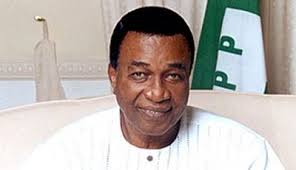As a growing child on the soft green hills of Enugu, precisely at 14 Affa Street, Uwani from 1963 to 1965, subsequently at 2b Denton Street, Ogui in 1967 and 33 Adelabu Street in the 1970s and now a full grown adult variously at 31 Awkunanaw Street, Achara layout and 12A Barr. Azubuike Anoliefo Crescent, Independence layout, I feel quite nostalgic about my Coal City.
Having been schooled and tutored variously at Methodist Primary school, Agbani road, St Bridget’s Primary School Asata, Union Secondary School Awkunanaw, University of Nigeria Enugu campus and later ASUTECH, I consider my self, an Enugu brought up, an Enugu Boy so to speak.
I still cherish all the sweet memories,my escapades and experiences, the thought of Enugu of yesteryears and that of earlier years will remain ever green, and my reminiscence about this most organized City I consider the epicenter of serenity is worth sharing.
The area today known as Enugu has always existed and inhabited by Homo sapiens or Mankind. But in modern historical parlance it was discovered in 1909 by a team of geological explorers led by Sir Albert Kitson.Hitherto the virgin land or forest today known as Enugu was just like one of those “evil forests”, or at best, a farmland used by surrounding villages. The forest became an attraction, a cynosure because of the discovery of fossilized crust, a hydrocarbon, coal beneath the top of Udi escarpment. This unique geological discovery attracted the natives and settlers to the area.
The compound word Enu-ugwu now anglicized consists of two Igbo words – Enu (Top) and Ugwu (Hill), meaning ” Top of the Hill” or “Hill Top”, derived its name from a little village east of Ngwo Town, situated at the top of Udi Hills, where coal was discovered in 1909. It was then called ” Enu–ugwu Ngwo“. However, most of the European “Enugu”, which we all know today, lies at the foot of Udi-Awgu-Nsukka hills, surrounded by a chain of soft green low hills, and panoramically sits at an altitude of 240 meters above sea level.
The main indigenous people of Enugu are Ndi Ogui Nike, who live in areas around Hotel Presidential, Obiagu, Ama-Igbo, Ihewuzi, Onu-Asata areas, fringes and precincts of Independence layout otherwise known as Koshen, Jubilee and Premier Layouts. Other groups include Awkunanaw people, who live mainly in Amechi, Ugwuagu, Merryland, Corridor, Achara, Independence layout and Uwani areas as well as the Enugwu Ngwo people who live on the hilltop, with their farmlands sprawling all over the valley especially Iva Valley and Coal Camp.
The discovery of coal deposit in these areas gave rise to settlements such as Iva Valley, Ugwu Aaron, Nchatancha, Coal Camp, Ugwu Nwasike, Ekulu around the foot of the hills, and as the population grew, the city expanded into the areas of other indigenous and migrant inhabitants. It was then popularly known as Enugwu-Ngwo, before it metamorphosed into Enugu.
The first immigrant settlers in Enugu was an exploration and exploitation team of coalminers under a British mining engineer named William John Leck. The team was accompanied by a gang of labourers led by Alfred Inoma from Onitsha. They built shanties and later bricks type quarters some of which are still evident in the vicinity of aria and the old teaching hospital.They all came in 1915. They were later joined by prisoners who were brought down from Udi to the coalmine. The prisoners built their own prison yard and set out to work in the mine.
While William Leck and the White men who came with him settled at Hill Top, Alfred Inoma and his group settled at a place named after him and called Ugwu Alfred. Alfred Inoma died very early, but William Leck lived in Enugu until his retirement in 1942.
It was the discovery of coal in Enugu in 1909 that led to the founding of the city of Port Harcourt in 1912, which served as a transit,an outlet for the shipment of coal overseas. The garden City was named after the else while British Secretary of State for the Colonies, Mr. Lewis Viscount Harcourt.
Shortly after the opening of the coalmine in 1915, the Colliery Management embarked on massive recruitment of labourers, Technicians, sedentary workers and Artisans to work the coalfields and later the railways powered by coal. It was also the same year that the first shipment of coal from Enugu to the United Kingdom was made.
The influx of workers in Enugu to work the coalfields and railways led to the establishment of “Colliery Villages” and railway quarters around ,Ogui, Asawa, the Artisan quarters to give shelter to these immigrant and Artisan. That was how places like Artisan, Asata, Coal Camp and Iva Valley came into existence.
In 1917, Enugu was declared a Second Class Township under the Colonial Order in Council No. 19 of 1917, along with Udi, which was declared a Third Class Township. Accordingly, a Township Advisory Board (TAB), consisting of Mr. J G Lawson, acting District Officer; Mr. J S Hayes, Colliery Manager; Mr. A B Milliken, Assistant Engineer; Mr. E C Braithwaite, Medical Officer; and Mr. W Reeder, Senior Superintendent of Prisons, was set up to take care of the political administration of the town.
In 1929, the Colonial Government gave approval that the administrative headquarters of Southern Provinces of Nigeria which then comprised of Onitsha, Ogoja, Owerri, Calabar, Ijebu, Oyo, Abeokuta, Ondo, Benin, Warri, as well as the Mandated of the Cameroon, be moved from Lagos to Enugu.
Enugu remained the Capital of Southern Provinces until 1939, when the Secretary of State for the Colonies, Mr. W G A Ormsby-Gore, in a memo dated September 17, 1937, approved the splitting of Southern Provinces into Eastern and Western Provinces with capitals at Enugu and Ibadan respectively.
Enugu was also capital of Eastern Region, capital of the sovereign Republic of Biafra, which comprised of the defunct Onitsha, Ogoja, Owerri, Calabar provinces including PortHarcourt, capital of East Central State, capital of Anambra State, and now, capital of Enugu State.
Those who were in the saddle of governance in Enugu and from there presided over the affairs of the people were Professor Eyo Ita, Leader of Government Business (1952 to 1954); Dr. Benjamin Nnamdi Azikiwe, Premier (1954 to 1959); Dr. Michael Iheonukara Okpara and Dr. Francis Akanu Ibiam, Premier and Governor respectively, (1959 to 1966); Colonel/General Chukwuemeka Odumegwu-Ojukwu, Military Governor, Eastern Region/Republic of Biafra (1966 to 1970).
Others were Mr. Mr. Anthony Ukpabi Asika, Administrator, (1967 to 1975); Colonel Anthony Aboki Ochefu, Military Governor, (July 1975 to October 1975); Colonel John Atom Kpera, Military Governor, (1975 to 1978); Colonel Datti Sadiq Abubakar, Military Governor, (1978 to 1979); Chief Jim Ifeanyichukwu Nwobodo, Governor, 1979 to 1983); and Chief Christian Onoh, Governor, (October 1983 to December 1983, the Architect of the present Enugu State which he sought to name Wawa State.
There were also Navy Captain Allison Madueke, Military Governor, (1984 to 1985);Commodore Emeka Omeruah, (1985 to 1987); Colonel Robert Nnaemeka Akonobi, Military Governor, (1987 to 1990); Colonel Herbert Obi Eze, Military Governor, (1990 to 1992); Dr. Okwesilieze Nwodo, Governor, (1992 to 1993); Navy Captain Temison Ejoor, Military Governor, (1993 to 1994); Colonel Lucky Mike Torey, Military Governor, (1994 to 1996); Colonel Sule Ahman, Military Governor, (1996 to 1998); and Navy Captain Benson Agbaje (1998 to 1999).
Others were Dr. Chimaroke Nnamani, Governor, (1999 to 2007); Barrister Sullivan Iheanacho Chime, Governor, (2007 to 2015): and Rt. Hon. Ifeanyi Ugwuanyi, Governor, (2015 to date). I was privileged to have worked with most of them from 1979 to 1995 as NTA Government House Correspondent and Press Secretary. They made their marks in the sands of time and in the Sands of the Coal City and other constituent Towns.
Permit me to single out Chief C.C. Onoh the Okaome, the Ananefu Ngwu of blessed memory and his forebears including the Onyeama of Eke and Justice Aniagolu the Architects of modern Enugu State for building on the superstructure, the foundation laid my Dr Michael Iheonukara Okpara, M.I. Power.
Will ever remain grateful to Governor C.C. Onoh, Chief Austin Ezenwa, Agbalanze Abagana, General Chukwuemeka Odumegwu Ojukwu, Eze Igbo Gburugburu and Dr Sam Orji for giving me my first political appointment as Press Secretary to Governor C.C. Onoh in 1983 during his brief stint as Governor of Anambra State.
It is pertinent to add “that a British Army Engineer called Captain Iva, took part in the excavation of the open cast coal mine at the foot of what we today call the Milliken hill. The valley beside it called Iva valley was named after him. Captain Demont O’Connor was the Colonial resident in charge of Onitsha Province where Enugu was initially located. He decided many disputes that arose around Enugu at that time. The O’Connor round about was named after him.”
Barr Azubuike Anoliefo, Political Scientist and Veteran Broadcast Journalist writes from Enugu.













